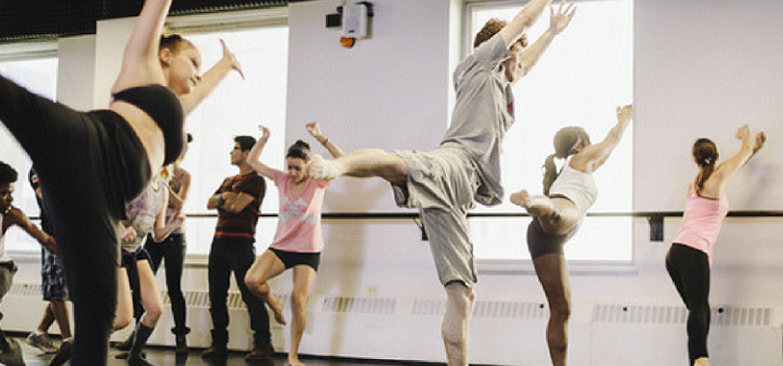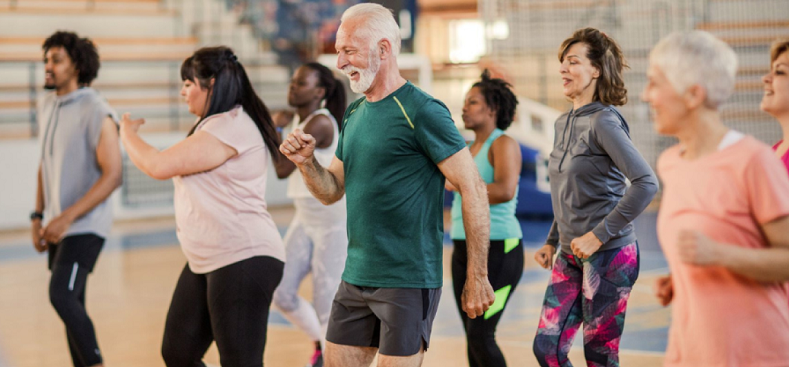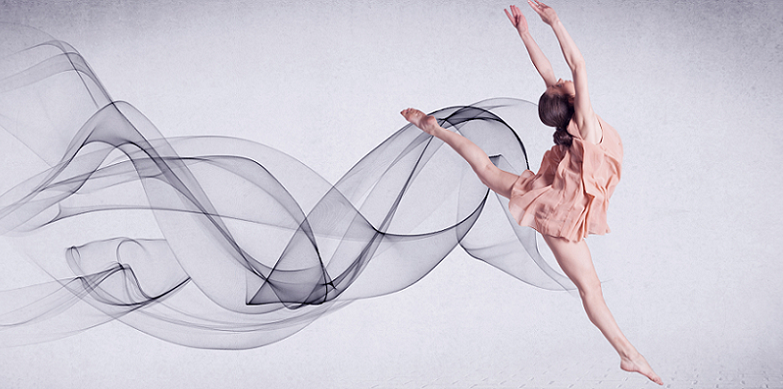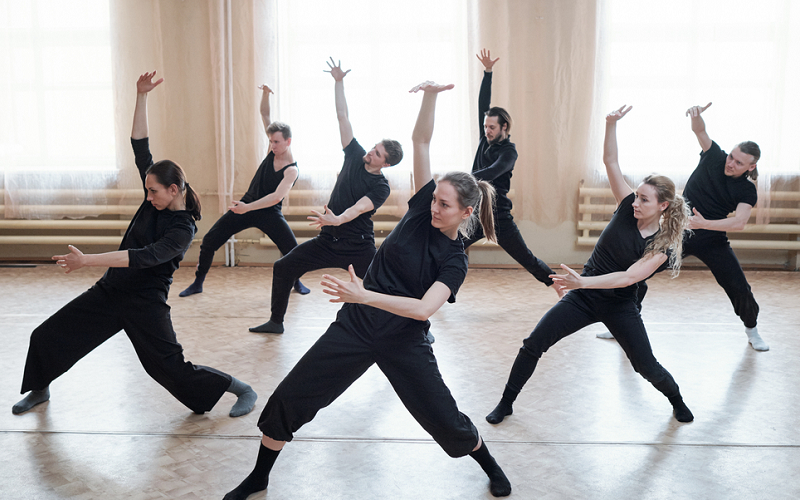Trauma can have a profound impact on our mental and physical well-being. While there are many ways to approach healing from trauma, dance therapy has gained popularity as an effective method. Dance therapy uses movement as a tool for processing emotions and building connections between the mind and body. Here we explore the healing power of dance therapy and how it can help individuals release trauma and move towards a more balanced and fulfilling life.
Trauma and Mental Health
Trauma is an experience that overwhelms an individual’s ability to cope with and integrate the emotions associated with it. It can be caused by a wide range of events, including natural disasters, accidents, physical or sexual assault, war, or the sudden loss of a loved one. Trauma can have profound effects on an individual’s mental health, including the development of post-traumatic stress disorder (PTSD), depression, anxiety, and other related disorders.
PTSD is one of the most common mental health disorders associated with trauma. It is a psychiatric disorder that develops in response to a traumatic event and is characterized by symptoms such as flashbacks, nightmares, and avoidance behaviors. Individuals with PTSD may experience intense emotions, such as fear and anger, and may also feel numb or disconnected from others. PTSD can have a significant impact on an individual’s daily life, making it difficult to function normally and engage in social activities.
Depression is another mental health disorder that can result from trauma. It is characterized by persistent feelings of sadness, hopelessness, and a lack of interest or pleasure in activities that were once enjoyable. Depression can affect an individual’s ability to concentrate, make decisions, and carry out daily activities. It can also lead to physical symptoms, such as fatigue, changes in appetite, and sleep disturbances.
Anxiety is a common mental health disorder that can also develop as a result of trauma. It is characterized by excessive worry, fear, and a sense of unease or apprehension. Anxiety can manifest in a variety of ways, including panic attacks, social anxiety, and generalized anxiety disorder. It can also lead to physical symptoms such as rapid heartbeat, sweating, and trembling.
Trauma can also lead to a range of other symptoms and challenges. For example, individuals who have experienced trauma may struggle with substance abuse, eating disorders, and self-harm. They may also experience difficulties with relationships and interpersonal connections, such as trust issues or difficulty forming close bonds with others.
Treating trauma-related mental health issues typically involves a combination of approaches. Psychotherapy, including cognitive-behavioral therapy and exposure therapy, is often used to help individuals process traumatic events and develop coping strategies.
Medications, such as antidepressants or anti-anxiety medications, may also be prescribed to help manage symptoms. Self-care strategies such as exercise, mindfulness practices, and social support can also be helpful in managing symptoms and promoting overall well-being.

Understanding Dance Therapy
Dance therapy is a form of psychotherapy that uses movement and dance as a tool to promote emotional, cognitive, and physical well-being. It is based on the belief that the body and mind are interconnected, and that movement can be used to express and process emotions, improve communication, and promote overall well-being.
There are several different types of dance therapy, each with its own principles and techniques. However, all types of dance therapy share a common goal of promoting healing and growth through movement.
One of the key principles of dance therapy is that movement can be used to express emotions that are difficult to verbalize. When words fail, movement can provide a way to express and process emotions in a safe and non-judgmental space. In dance therapy, individuals are encouraged to move freely and express themselves through their bodies, without worrying about technique or performance.
Another principle of dance therapy is that movement can be used to promote communication and interpersonal connections. Through movement, individuals can develop a greater awareness of their own bodies and the bodies of others. They can also learn to communicate with others non-verbally, through gestures, facial expressions, and body language.
Dance therapy can be used to treat a wide range of mental health conditions, including depression, anxiety, trauma, and eating disorders. It can also be used to promote physical health and well-being, such as improving balance, flexibility, and coordination.
There are several different techniques used in dance therapy, including free-form dancing, guided dancing, dance and music therapy, and body movement therapy. Free-form dancing involves allowing the body to move freely and expressively, without worrying about technique or form. Guided dancing involves following a set of movements or instructions, often with a specific theme or intention. Dance and music therapy involve using music as a tool for promoting emotional expression and processing. Body movement therapy focuses on using movement to promote physical healing and rehabilitation.

How Dance Therapy Helps in Trauma Healing
Trauma can have a profound impact on an individual’s mental and physical health, and it can be challenging to find effective ways to process and heal from traumatic experiences. However, dance therapy has been shown to be a powerful tool for promoting trauma healing and recovery. In this section, we will explore how dance therapy can help individuals heal from trauma and move towards a more balanced and fulfilling life.
Dance Movement as a Tool for Processing Emotions
One of the key ways that dance therapy helps in trauma healing is by using movement as a tool for processing emotions. Traumatic experiences can be difficult to verbalize, and individuals may struggle to find words to express their feelings. However, movement can provide a way to express and release emotions in a safe and non-judgmental space. Through dance therapy, individuals can explore and express their emotions through movement, allowing them to release tension, anger, fear, and other emotions associated with trauma.
Dance Therapy Strengthens the Link Between Body and Mind
Another way that dance therapy helps in trauma healing is by recognizing the link between the body and mind. Trauma can result in physical symptoms, such as tension, headaches, and muscle pain. By using movement to release physical tension, individuals can also begin to release emotional and psychological tension. By becoming more aware of their bodies, individuals can develop a greater understanding of their emotions and thoughts, allowing them to process trauma more effectively.
Dance Therapy Builds Trust and Relationships
Trauma can result in a loss of trust in oneself and others. Through dance therapy, individuals can develop a greater sense of trust in themselves and others. By working with a trained dance therapist, individuals can develop a trusting relationship with their therapist, which can provide a safe and supportive space for processing emotions and experiences related to trauma. Through group dance therapy sessions, individuals can develop a sense of connection and support with others who have experienced similar traumas, which can be a powerful source of healing and recovery.
Dance Therapy Brings Empowerment and Self-Expression
Dance therapy can help individuals who have experienced trauma feel empowered and in control of their bodies and emotions. Trauma can leave individuals feeling helpless and out of control, but through dance therapy, individuals can learn to use movement as a tool for empowerment and self-expression. By taking ownership of their bodies and emotions, individuals can begin to move towards a sense of agency and control in their lives.

Different Techniques in Dance Therapy
Dance therapy is a form of psychotherapy that uses movement and dance to promote emotional, cognitive, and physical well-being. There are several different techniques used in dance therapy, each with its own principles and methods.
Free-Form Dancing
Free-form dancing is one of the most common techniques used in dance therapy. It involves allowing the body to move freely and expressively, without worrying about technique or form. Free-form dancing provides a safe and non-judgmental space for individuals to explore their emotions and express themselves through movement. It can also be used as a tool for stress relief, physical exercise, and self-expression.
Guided Dancing
Guided dancing involves following a set of movements or instructions, often with a specific theme or intention. It can be used to help individuals explore specific emotions or themes, such as grief, anger, or joy. Guided dancing can also be used to promote relaxation, mindfulness, and connection with others.
Dance and Music Therapy
Dance and music therapy involve using music as a tool for promoting emotional expression and processing. In dance and music therapy, individuals are encouraged to move and express themselves in response to music, allowing them to explore their emotions and develop a deeper connection to their bodies. Music can also be used to promote relaxation and stress relief, and to provide a sense of comfort and safety.
Body Movement Therapy
Body movement therapy focuses on using movement to promote physical healing and rehabilitation. It can be used to help individuals recover from injuries or illnesses, improve balance and coordination, and promote overall physical well-being. Body movement therapy can also be used to promote emotional and cognitive healing, as the body and mind are interconnected.
Research on Dance Therapy for Trauma
There is a growing body of research that supports the effectiveness of dance therapy in promoting healing and recovery from trauma. In this section, we will explore some of the key studies on dance therapy for trauma and the positive outcomes associated with this form of therapy.
A Systematic Review of Dance Therapy for Trauma
A 2018 systematic review of dance therapy for trauma found that dance therapy was effective in reducing symptoms of PTSD and depression among individuals who had experienced trauma. The review included 11 studies that examined the effectiveness of dance therapy for trauma-related symptoms, and the results indicated that dance therapy was associated with significant improvements in mood, self-esteem, and overall quality of life.
A Randomized Controlled Trial of Dance/Movement Therapy for Female Veterans With Ptsd
A 2016 randomized controlled trial of dance/movement therapy for female veterans with PTSD found that dance therapy was associated with significant reductions in PTSD symptoms, as well as improvements in overall mental health and quality of life. The study included 23 female veterans with PTSD, and the results indicated that dance therapy was an effective adjunct therapy for PTSD treatment.
A Pilot Study of Dance/Movement Therapy for Survivors of Sexual Violence
A 2018 pilot study of dance/movement therapy for survivors of sexual violence found that dance therapy was associated with significant reductions in symptoms of PTSD and depression, as well as improvements in overall well-being and body image. The study included 20 women who had experienced sexual violence, and the results indicated that dance therapy was a promising intervention for survivors of sexual violence.
A Qualitative Study of Dance/Movement Therapy for Women With Histories of Childhood Sexual Abuse
A 2016 qualitative study of dance/movement therapy for women with histories of childhood sexual abuse found that dance therapy was associated with significant improvements in emotional regulation, self-awareness, and interpersonal relationships. The study included 15 women who had experienced childhood sexual abuse, and the results indicated that dance therapy provided a safe and supportive space for healing and growth.

